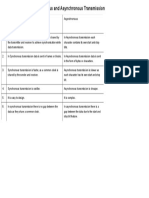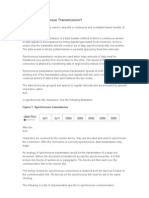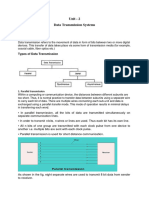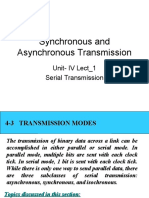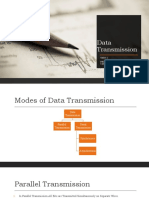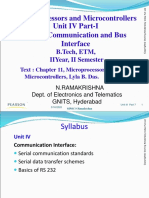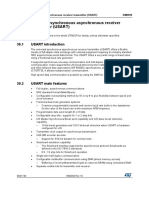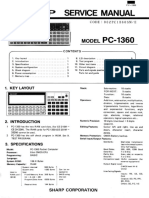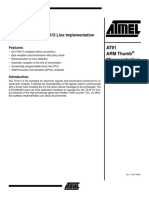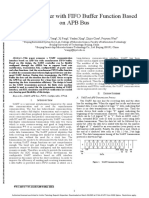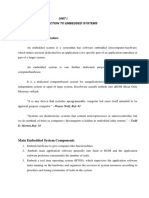0% found this document useful (0 votes)
31 views6 pagesSynchronous and Asynchronous Transmission
The document outlines the differences between synchronous and asynchronous transmission, highlighting that synchronous transmission requires synchronized clocks and sends data in blocks, while asynchronous transmission does not require a clock and sends data one byte at a time with added parity bits. Synchronous transmission is faster and more efficient for large data transfers, whereas asynchronous transmission is simpler and more economical for smaller data. Both methods have their advantages and are used in different contexts depending on the requirements of the communication system.
Uploaded by
mescholar12Copyright
© © All Rights Reserved
We take content rights seriously. If you suspect this is your content, claim it here.
Available Formats
Download as PDF, TXT or read online on Scribd
0% found this document useful (0 votes)
31 views6 pagesSynchronous and Asynchronous Transmission
The document outlines the differences between synchronous and asynchronous transmission, highlighting that synchronous transmission requires synchronized clocks and sends data in blocks, while asynchronous transmission does not require a clock and sends data one byte at a time with added parity bits. Synchronous transmission is faster and more efficient for large data transfers, whereas asynchronous transmission is simpler and more economical for smaller data. Both methods have their advantages and are used in different contexts depending on the requirements of the communication system.
Uploaded by
mescholar12Copyright
© © All Rights Reserved
We take content rights seriously. If you suspect this is your content, claim it here.
Available Formats
Download as PDF, TXT or read online on Scribd
/ 6











